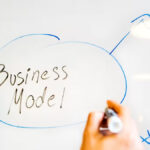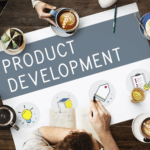Product compliance has now turned out to be one of the key parts of your business in today’s competitive market. Whether it is a new launch of your product or an international extension, product regulatory compliance is a must. Failing to do this damages your reputation, along with high fines or legal troubles, or even your product can get recalled. As they say, prevention is better than cure: it saves you a lot of headaches later dealing with your major issues now, and it provides proactive compliance.
This guide will help you understand compliance products and give you practical advice to keep your business on the right side of the law and industry expectations. Let’s dive in. Compliance is not a task done once but a journey.
What is Product Compliance?
Product compliance sounds so much like a law-cliché, but it is worth explaining. Product compliance means that the products of an enterprise are ready to meet safety standards, environmental criteria, and quality requirements before they are released to customers. It is not just following rules- it is building trust with consumers, access to the global market, and being able to avoid costly errors.
Think of it as setting your business up for success. Without product regulatory compliance, there is a very good chance that your product will never hit the shelves.
Key Elements of Product Compliance Basics:
1. Regulatory Standards: A Moving Target
Regulatory standards are the scaffolding of product compliance. They tend to differ from country to country and the industry within which you operate, making it very complicated when trying to grow your business on a global scale. Yet, barring yourself from complying with these standards ends up leaving dire consequences; in the U.S., the Consumer Product Safety Commission (CPSC) runs the full scope of safety coverage for products, from toys to electronics; the Food and Drug Administration (FDA) keeps ensuring that food and medical products are safe.
The European Union has its own set of rules for businesses, such as CE marking or REACH, which the businesses must comply with. Truth be told, billions in noncompliance are lost through loopholes each year. For example, the EU fined corporations more than €1.3 billion in 2021 due to excise violations (EU Press Release).
2. Labeling Requirements: Words Matter
Labeling does not mean brand advertising means safety and transparency. It will include safety warnings, instructions for use, and environmental impact, among other things. The requirements differ from region to region. If this is not met, it can result in fines or recalls.
According to a report released by the Consumer Product Safety Commission (CPSC), improper labeling is one of the most common causes of product safety violations in the U.S.
3. Testing and Certification: No Shortcuts Here
This requirement is testing, which is an integral part of the compliance process; your products will go through tests from independent, third-party labs that will check for safety and compliance with regulatory standards.
Products sold within the European Union will, therefore, require testing and will carry a CE mark, indicating that these products meet safety, health, and environmental protection requirements for the European market.
The global testing market is set to grow to $275 billion by 2027, highlighting the increasing importance of product testing in global business.
4. Documentation: Paper Trails That Matter
In compliance, documentation is key. It includes records of product safety, regulatory approvals, and environmental impact assessments. Keeping these documents organized is essential in case of an audit or legal inquiry. Companies that fail to maintain proper documentation often face heavy fines and product recalls.
5. Traceability Systems: Tracking is Key
Traceability systems, such as serial numbers, barcodes, and lot numbers, allow you to track your product through the supply chain. This is crucial if a product needs to be recalled or if you need to verify compliance at different stages of production. According to a report, 50% of product recalls happen due to poor traceability.
Product Compliance by Region: A Global Perspective
Product regulatory compliance varies greatly by region. Knowing the regulations for each market you enter is essential to avoid legal trouble.
1. United States: The Land of Strict Rules
In the U.S., agencies like the Consumer Product Safety Commission (CPSC), Food and Drug Administration (FDA), and Federal Communications Commission (FCC) regulate product compliance. For example, products sold in the U.S. must meet FCC safety standards if they are electronic. Companies that don’t meet these standards risk recalls, fines, and lawsuits.
2. European Union: Setting the Standard for Safety
The European Union is known for its strict regulatory environment. Directives like CE Marking, RoHS (which limits hazardous substances in electronics), and REACH (which controls chemicals) require compliance for businesses. If you don’t meet these standards, your product can be banned from the European market, resulting in lost revenue. In 2020, EU authorities conducted over 1,000 product recalls for safety violations.
3. China: The Land of Rising Standards
China has its regulatory requirements, particularly for electronics, food, and medical products. The China Compulsory Certification (CCC) mark is required for many products sold in China. If your product doesn’t meet these standards, you won’t be able to sell it in the Chinese market.
Product Compliance in the Supply Chain
It’s not enough for your final product to be compliant; your entire supply chain must follow the same rules. If one supplier doesn’t meet regulatory standards, it could delay your product or lead to recalls.
Statistics show that 30% of product recalls are due to issues within the supply chain. So, working with trustworthy sourcing companies like Brand New MD can help ensure that every part of your product is compliant before it reaches you. Proper vetting of suppliers can save you from future issues.
Tools and Resources for Ensuring Compliance: Equipping for Success
Managing product regulatory compliance can be overwhelming, but the right tools can make it easier.
Let’s take a look at some helpful resources:
1. Compliance Management Software: Simplifying Complexity
Compliance management software helps businesses track regulations, store documents, and manage audits. With the market for compliance software expected to grow by 13.5% annually until 2028, these tools are becoming indispensable for companies that need to stay on top of compliance requirements.
2. Third-Party Testing Labs: The Gold Standard
Third-party testing labs are essential for ensuring that your products meet regulatory standards. These labs provide unbiased testing results and certifications that show your product is compliant with industry regulations.
3. Industry Associations and Regulatory Bodies: Staying Informed
Industry associations provide valuable resources like training programs, updates on regulatory changes, and networking opportunities. Regulatory bodies often offer guidance documents and workshops to help businesses stay compliant.
Steps to Ensure Product Compliance: A Proactive Approach
- Identify Applicable Regulations: Research the regulations in each market where you plan to sell your product.
- Assess Product Risks: Conduct early risk assessments to identify potential compliance issues.
- Collaborate with Suppliers: Ensure your suppliers meet compliance standards and maintain open communication.
- Obtain Necessary Documentation: Gather and store all necessary certifications and test reports.
- Monitor Changes in Standards: Keep up with changes in compliance regulations to stay ahead.
- Conduct Audits: Regularly audit your processes to ensure ongoing compliance.
Benefits of Product Compliance: More Than Just Avoiding Penalties
1. Enhanced Customer Trust and Brand Reputation:
Today’s consumers are more informed than ever, and they prefer to buy from brands they trust. Compliant products are seen as safer, which can build customer loyalty and strengthen your brand’s reputation.
2. Easier Market Entry:
Compliance makes it easier to enter international markets. Without the necessary certifications, selling in new markets becomes a costly and time-consuming process.
3. Fewer Legal Liabilities:
Compliant businesses face fewer legal disputes. Companies that follow regulatory standards experience 40% fewer legal issues compared to non-compliant businesses.
Challenges and Common Pitfalls: Navigating the Compliance Tightrope
Rapidly Changing Regulations:
Regulations are constantly evolving, especially in industries like technology and pharmaceuticals. This makes it important for businesses to stay updated on the latest compliance changes.
Misunderstanding the Scope
New businesses or those entering a new market may not fully understand the compliance requirements. Misinterpreting regulations can lead to fines and delays.
Inadequate Documentation
Documentation is essential, but many companies overlook it. Without the right records, you risk fines, product recalls, or legal action.
Conclusion
Product compliance may seem like a huge task, but it’s worth the effort. By ensuring that your products meet all regulatory requirements, you not only avoid legal trouble but also gain customer trust and expand your market reach.
As the saying goes, “a stitch in time saves nine.” The sooner you address compliance, the fewer headaches you’ll face later.
Are you ready to tackle product compliance head-on? Reach out to experts in compliance products and top sourcing companies like BrandNewMD to help you stay on track. Don’t wait for a crisis—be proactive and lead with compliance.
Also, check out these top picks from BNMD, specially curated to enhance your knowledge.









